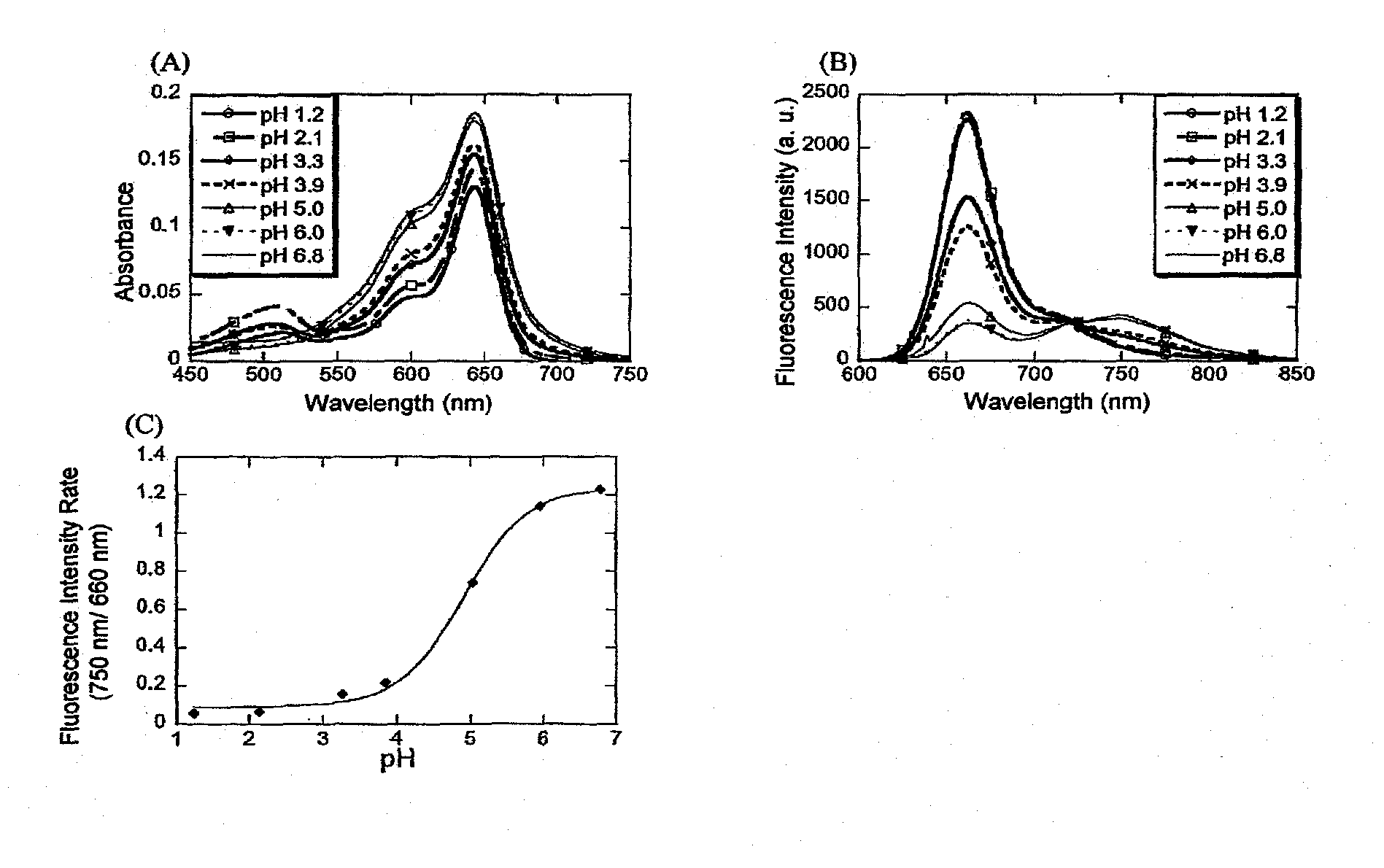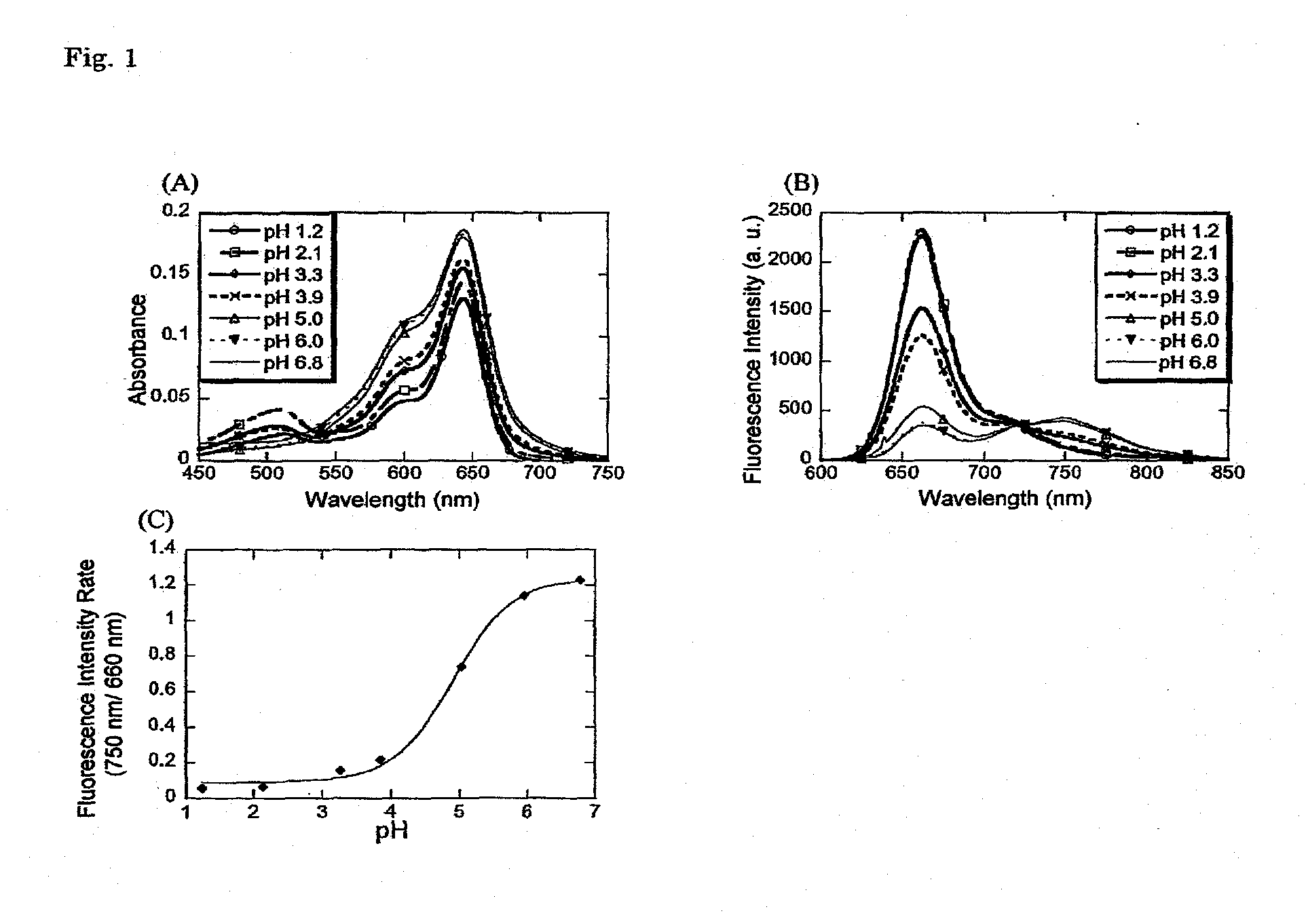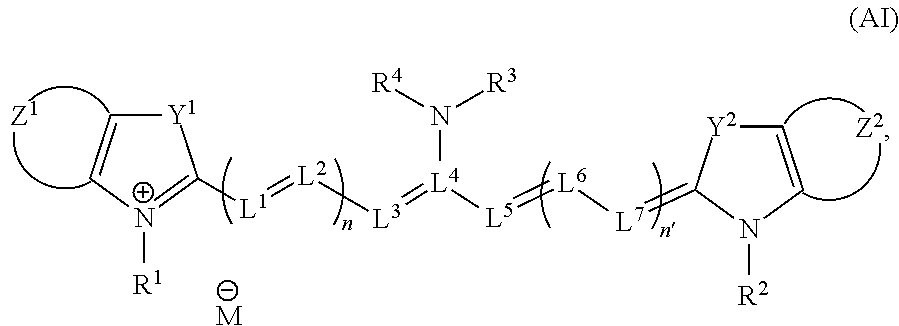Fluorescent probe
a fluorescent probe and probe body technology, applied in the field of fluorescence probes, can solve the problems of poor permeability of excitation light into biological tissues, failure to solve problems, probes to cells or biological tissues, etc., and achieve the effect of superior biological tissue permeability
- Summary
- Abstract
- Description
- Claims
- Application Information
AI Technical Summary
Benefits of technology
Problems solved by technology
Method used
Image
Examples
example 1
Synthesis of Compound 5
(A) Synthesis of Compound 1
[0051]2,3,3-Trimethyl-3H-indole (7.2 g, 45 mmol) and 3-iodopropionic acid (13 g, 63 mmol) were dissolved in o-dichlorobenzene. The solution was heated and stirred at 110° C. for 15 hours under an argon atmosphere. The precipitates obtained by filtration were washed with diethyl ether and acetone to obtain Compound 1 (11 g).
(B) Synthesis of Compound 2
[0052]Malonaldehyde disnilide monohydrochioride (0.68 g, 2.6 mmol) and diisopropylethylamine (0.69 g, 5.3 mmol) were suspended to dichloromethane (6 mL). A mixed solution of acetic anhydride (0.36 g, 3.5 mmol) and dichloromethane (6 mL) was added dropwise to the suspension under ice cooling, and the mixture was further stirred for 1 hour under ice cooling (yellow reaction mixture). Separately, Compound 1 and sodium acetate (0.85 g, 10 mmol) were dissolved in,a mixed solution of acetonitrile (25 mL) and water (1 mL), and refluxed, and the previously obtained yellow reaction mixture was add...
example 2
Spectral Change of Compound 5 in Association with pH Change
[0058]In a 1:1 mixed solution of 100 mmol / L phosphate buffer (pH 1.2, 2.1, 3.3, 3.9, 5.0, 6.0, 6.8) and acetonitrile (containing 0.1% or less of DMSO as an auxiliary solvent), absorption spectra and fluorescence spectra (excitation wavelength: 640 nm) of Compound 5 were measured. The absorption spectra are shown in FIG. 1, (A), and the fluorescence spectra are shown in FIG. 1, (B). It can be understood that with elevation of pH, the absorbance around 650 nm increased, and the absorption spectrum changed. Moreover, it can also be understood that in the fluorescence spectrum, with elevation of pH, the fluorescence intensity decreased around 660 nm, and increased around 750 nm. Therefore, pH change can be accurately measured by using the ratio method based on one-wavelength excitation / two-wavelength fluorescence measurement. FIG. 1(C) shows ratio of fluorescence intensities at 660 nm and 750 nm. The fluorescence intensities at...
PUM
| Property | Measurement | Unit |
|---|---|---|
| fluorescence wavelength | aaaaa | aaaaa |
| fluorescence wavelength | aaaaa | aaaaa |
| fluorescence wavelength | aaaaa | aaaaa |
Abstract
Description
Claims
Application Information
 Login to View More
Login to View More - R&D
- Intellectual Property
- Life Sciences
- Materials
- Tech Scout
- Unparalleled Data Quality
- Higher Quality Content
- 60% Fewer Hallucinations
Browse by: Latest US Patents, China's latest patents, Technical Efficacy Thesaurus, Application Domain, Technology Topic, Popular Technical Reports.
© 2025 PatSnap. All rights reserved.Legal|Privacy policy|Modern Slavery Act Transparency Statement|Sitemap|About US| Contact US: help@patsnap.com



